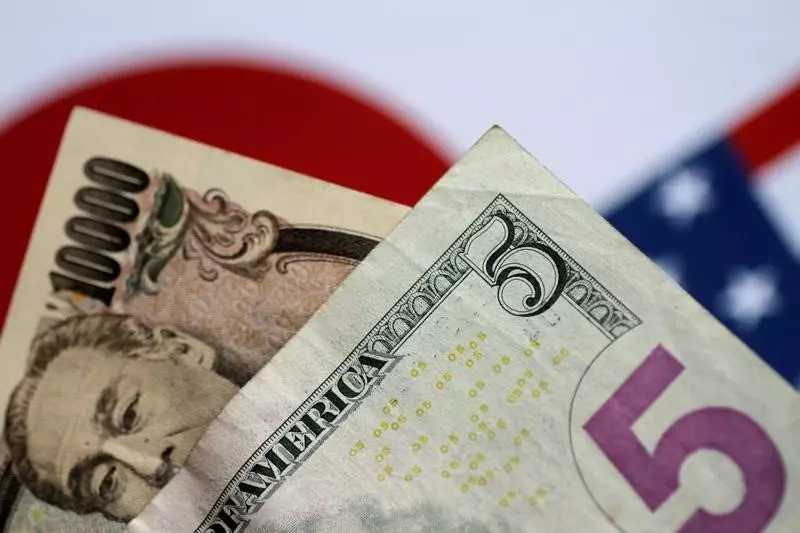The Intricacies of USD/JPY Dynamics Amidst Federal Reserve Rate Cuts

In the world of currency trading, the USD/JPY pair serves as a barometer for investors, reflecting broader economic relationships and monetary stances between the United States and Japan. As we head towards a potential shift in U.S. Federal Reserve monetary policy in 2024, understanding the implications of possible rate cuts becomes paramount. The question arises: how will these changes influence the USD/JPY exchange rate? The answers may be more complicated than anticipated.
The distinct monetary policies of the U.S. Federal Reserve and the Bank of Japan (BoJ) create a landscape of uncertainty for traders. Investors’ sentiments are mixed; while there is a prevailing assumption that U.S. rate cuts will weaken the dollar against the yen, historical context paints a more nuanced picture. Analysts from Bank of America have pointed out that rate cuts do not automatically correlate with a drop in USD/JPY. This intricacy signifies that market participants must critically assess broader economic variables, which can significantly modify how currency pairs react.
Historically, there have been periods when the USD/JPY pair did not decline during instances of Federal Reserve easing. Notably, the global financial crisis of 2007-2008 produced a remarkable situation where unwinding yen carry trades fueled a significant appreciation of the yen. Thus, the relationship between rate cuts and currency valuation should not be seen through a simplified lens; contextual economic conditions play a pivotal role.
A crucial factor in determining the future trajectory of the USD/JPY pair lies within Japan’s capital flow dynamics. Over the last decade, Japanese investment patterns have shifted away from foreign bonds towards more sustainable avenues such as foreign direct investment (FDI) and equities. Unlike bonds, which are easily swayed by interest rate differentials, FDI and equity investments center around long-term growth potential.
This shift indicates that even if U.S. interest rates dip, it is unlikely that Japanese investors will dramatically repatriate their investments, which could traditionally bolster the yen. The persistent trend of capital outflows, largely driven by Japan’s demographic challenges, sets a structurally bearish outlook for the yen. As Japanese retail investors continue to escalate their foreign equity stakes through programs like the Nippon Individual Savings Account (NISA), the emphasis on enduring investments rather than volatile speculation becomes clearer.
A vital consideration in this analysis is the anticipated economic trajectory of the United States. While some analysts speculate on a precarious balance sheet recession, the prevailing forecast leans towards a soft landing for the U.S. economy. In such a scenario, the expectation is for a gradual and modest reduction in Fed rates rather than an aggressive overhaul.
As a result, the USD/JPY pair may not respond favorably to these rate cuts as market participants expect. The forecasts suggest three 25-basis-point cuts by the end of 2024 could give rise to a stable or even strong USD/JPY, countering the broader financial market expectations that look for sharper declines.
Japanese life insurers represent another crucial element in the broader USD/JPY equation. Historically significant players in the foreign bond markets, life insurers are currently moderating their hedging ratios, influenced by the perceived strength of the yen. The high costs associated with hedging against yen depreciation, alongside a systematic outlook of reducing foreign bond exposure, hints at a constrained capacity for any yen appreciation should the Fed alter its rate stance.
Furthermore, public pension funds are likewise engaged in overseas bond investments but tend to take a long-term approach less influenced by short-term fluctuations in market sentiment. This sluggish response further complicates the potential for immediate jolts in the yen valuation, even in partnership with Fed rate cuts.
As market observers and participants contemplate the future movements of USD/JPY in the context of speculative Federal Reserve actions, it is evident that the relationship between these two currencies is not straightforward. While risks exist, notably the fallout from a potential U.S. recession, which could provoke a sharper decline in USD/JPY, the overall economic indicators suggest a more stable outlook.
Understanding the multifaceted interaction of U.S. monetary policy, Japanese capital flows, and demographic trends is crucial for stakeholders. The USD/JPY pair is likely to remain a focal point in future discussions, providing insights not merely into currency valuations but into the underlying economic health of both nations.





